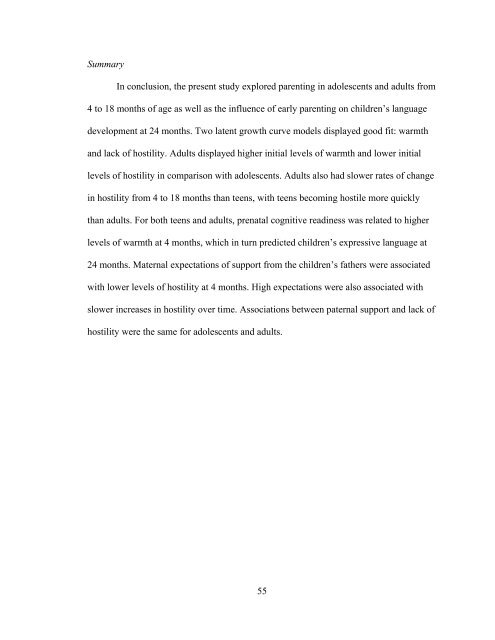DIFFERENCES BETWEEN ADOLESCENT AND ADULT MOTHERS ...
DIFFERENCES BETWEEN ADOLESCENT AND ADULT MOTHERS ...
DIFFERENCES BETWEEN ADOLESCENT AND ADULT MOTHERS ...
Create successful ePaper yourself
Turn your PDF publications into a flip-book with our unique Google optimized e-Paper software.
Summary<br />
In conclusion, the present study explored parenting in adolescents and adults from<br />
4 to 18 months of age as well as the influence of early parenting on children’s language<br />
development at 24 months. Two latent growth curve models displayed good fit: warmth<br />
and lack of hostility. Adults displayed higher initial levels of warmth and lower initial<br />
levels of hostility in comparison with adolescents. Adults also had slower rates of change<br />
in hostility from 4 to 18 months than teens, with teens becoming hostile more quickly<br />
than adults. For both teens and adults, prenatal cognitive readiness was related to higher<br />
levels of warmth at 4 months, which in turn predicted children’s expressive language at<br />
24 months. Maternal expectations of support from the children’s fathers were associated<br />
with lower levels of hostility at 4 months. High expectations were also associated with<br />
slower increases in hostility over time. Associations between paternal support and lack of<br />
hostility were the same for adolescents and adults.<br />
55
















